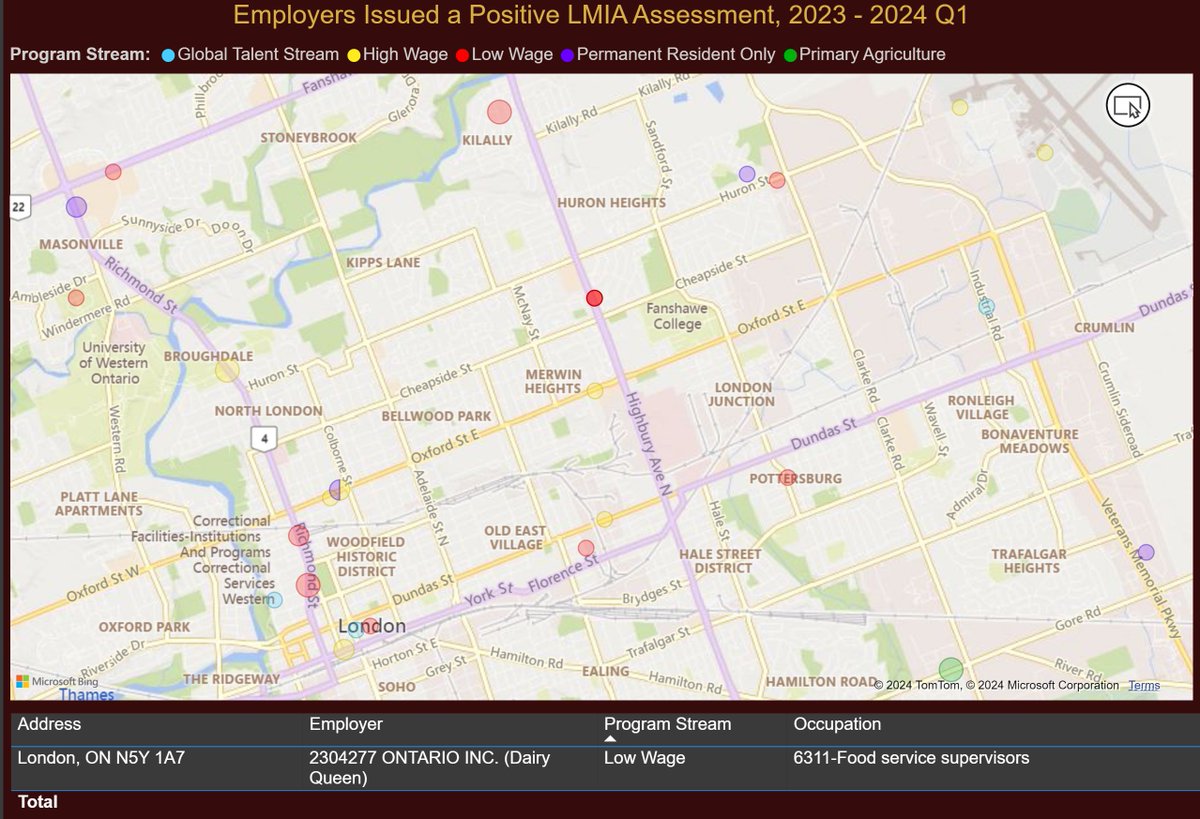This is unbelievably cool - a new website that maps out who got approved to hire temporary foreign workers, and where. Here's the data for City of Toronto.
I'm surprised "Dairy Freeze Inc." couldn't find a worker locally.
I'm surprised "Dairy Freeze Inc." couldn't find a worker locally.

Here is the tool that maps out Temporary Foreign Workers - Labour Market Impact Assessments. Thanks to the Missing Middle viewer who sent it our way.
lmiamap.ca
lmiamap.ca
I really have trouble believing we can't find anyone to work at the Dairy Queen by Fanshawe College.
(Maybe they'd have more luck if they brought back serving ice cream in those upside down baseball helmets.)
(Maybe they'd have more luck if they brought back serving ice cream in those upside down baseball helmets.)

We really need to stop solving our problems through exploiting temporary workers in a program that gives them almost no enforceable rights.
Anyone good enough to work here is good enough to stay here.
Anyone good enough to work here is good enough to stay here.
• • •
Missing some Tweet in this thread? You can try to
force a refresh











